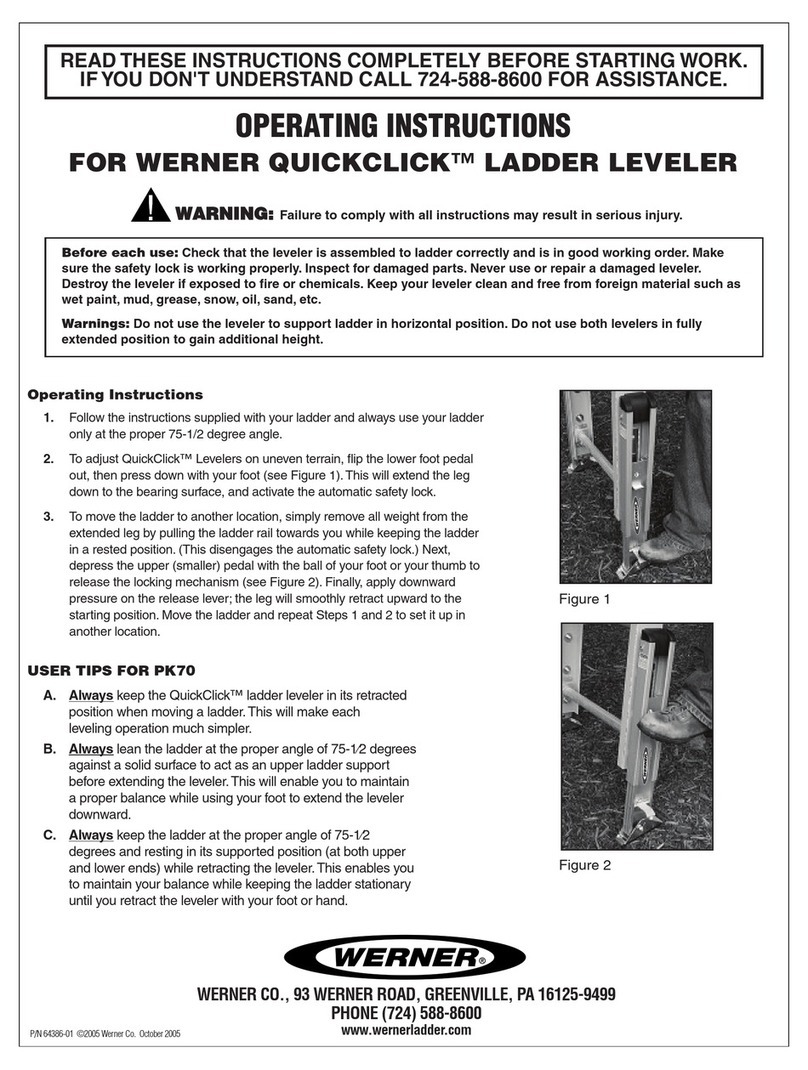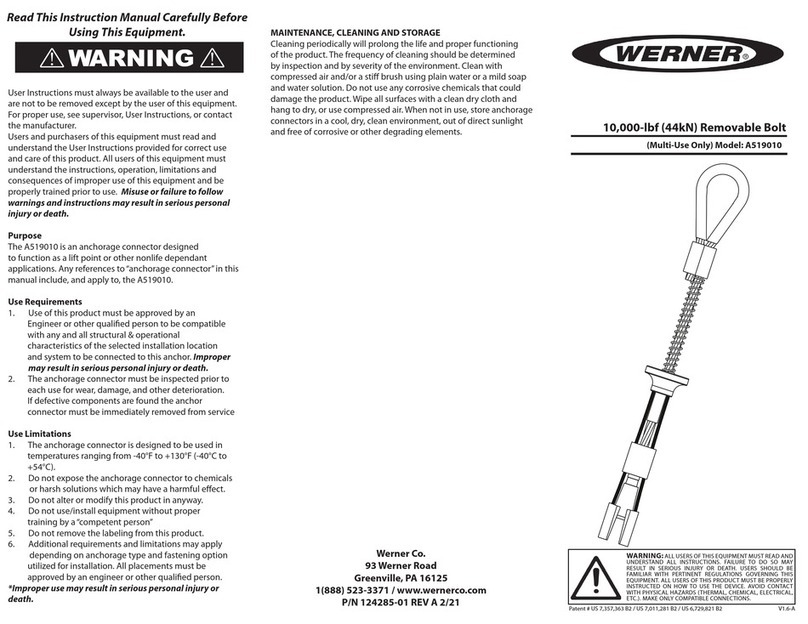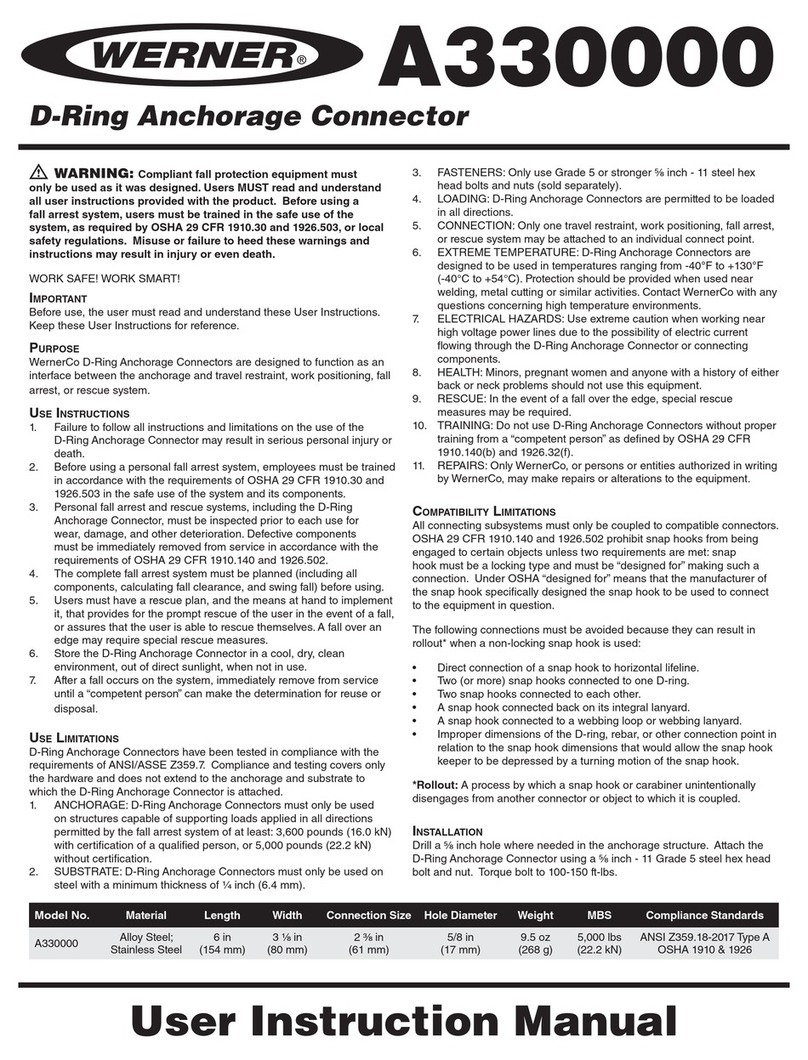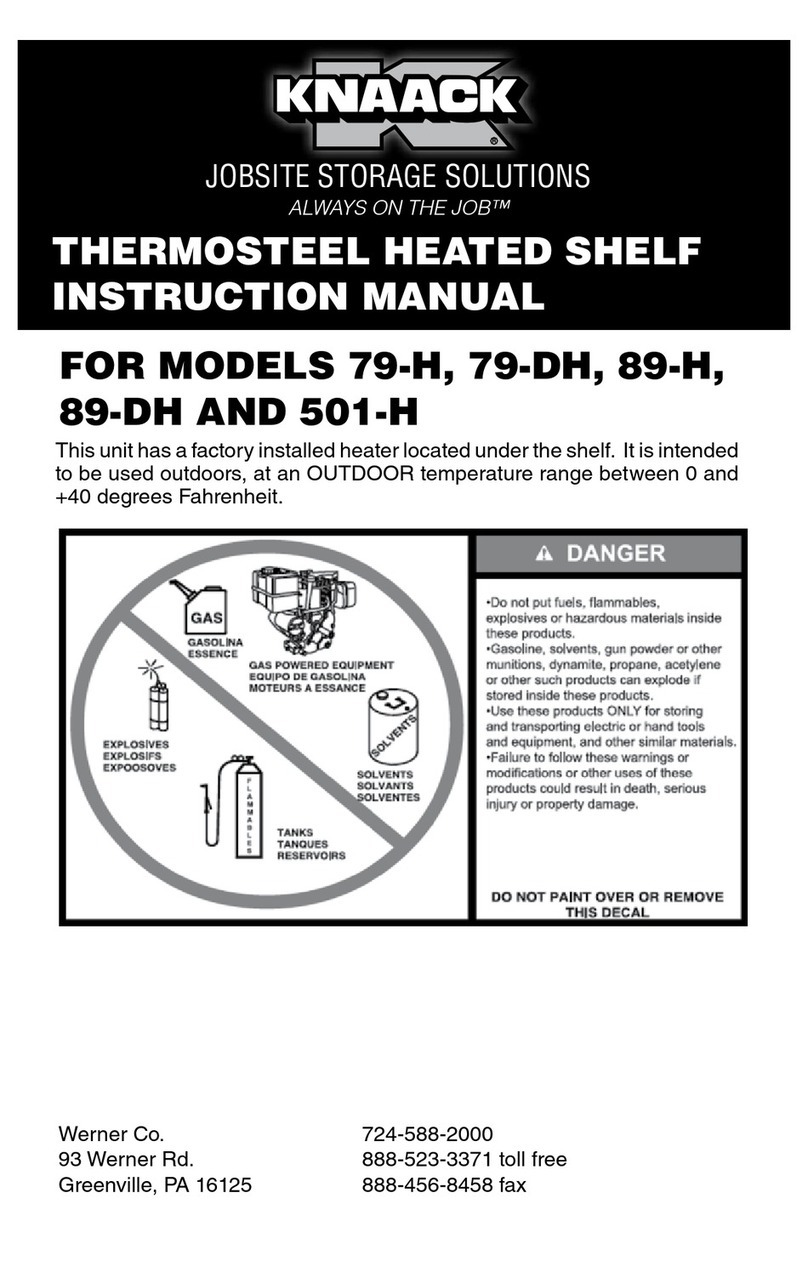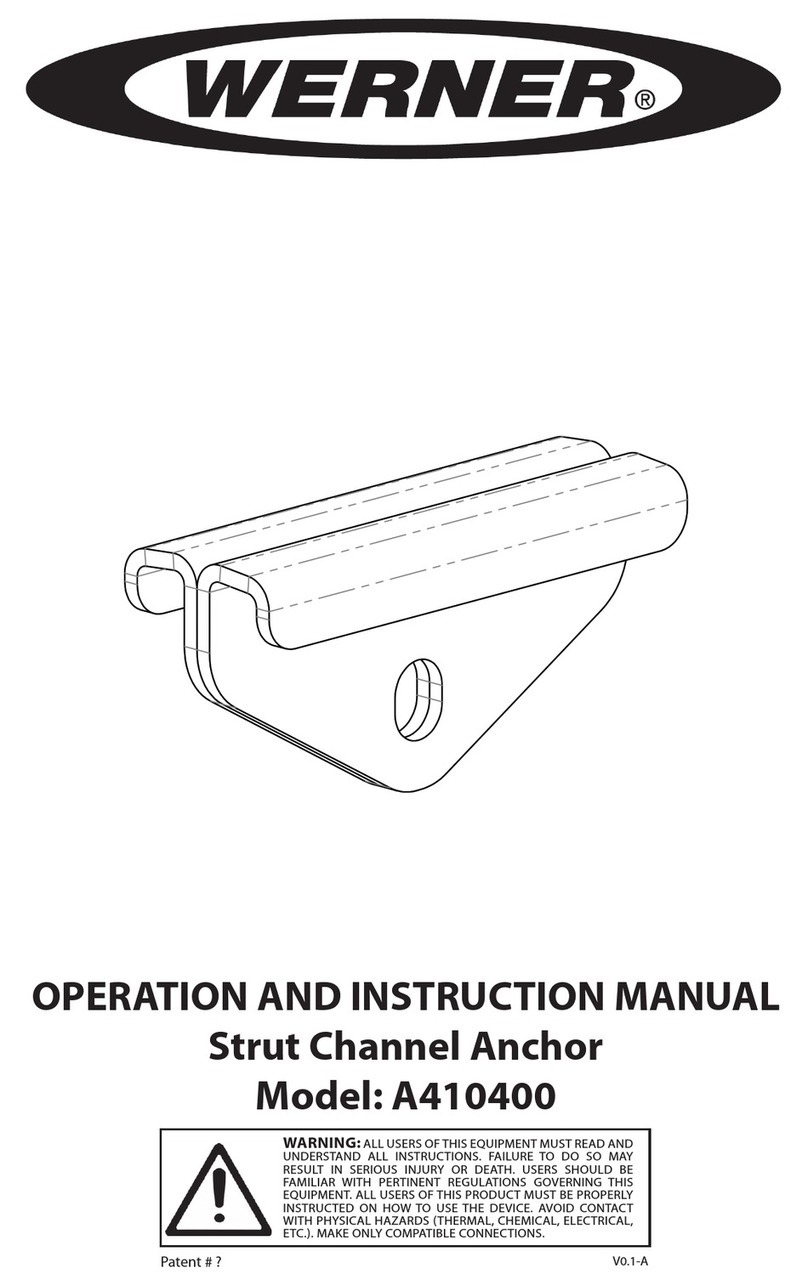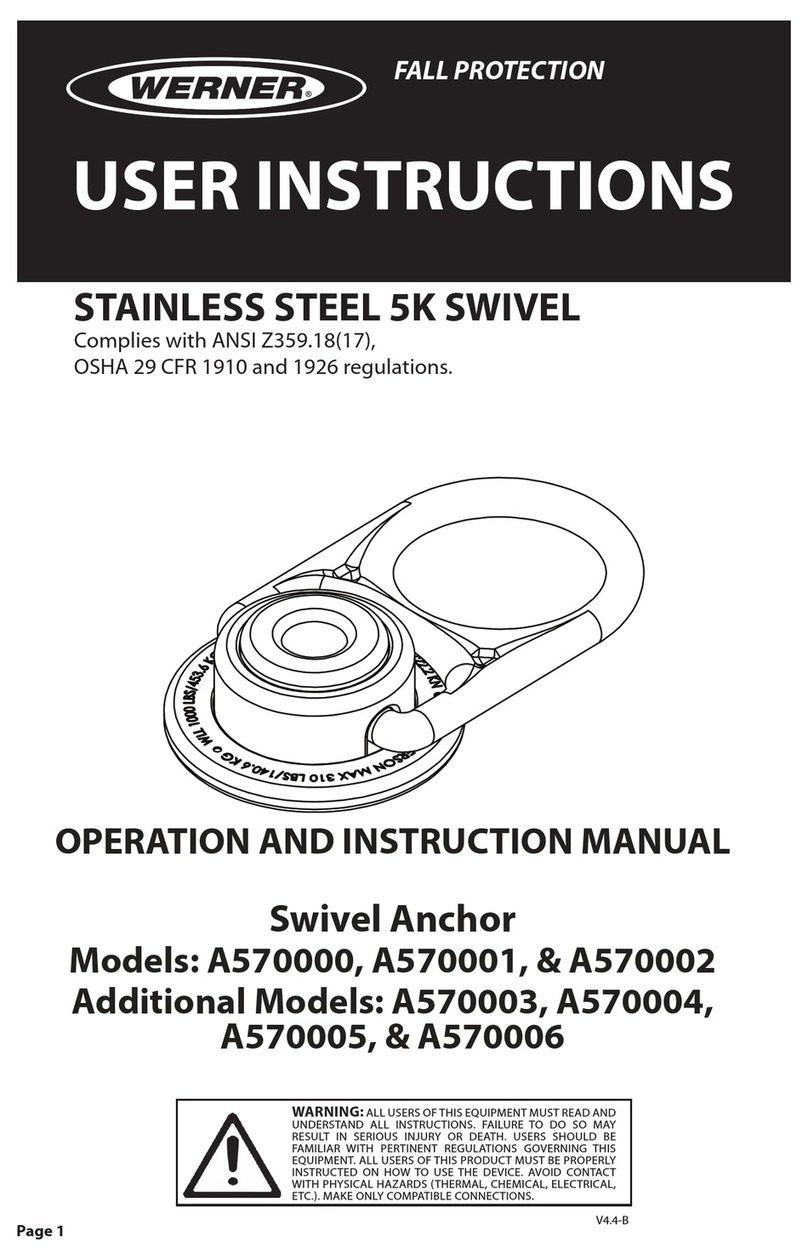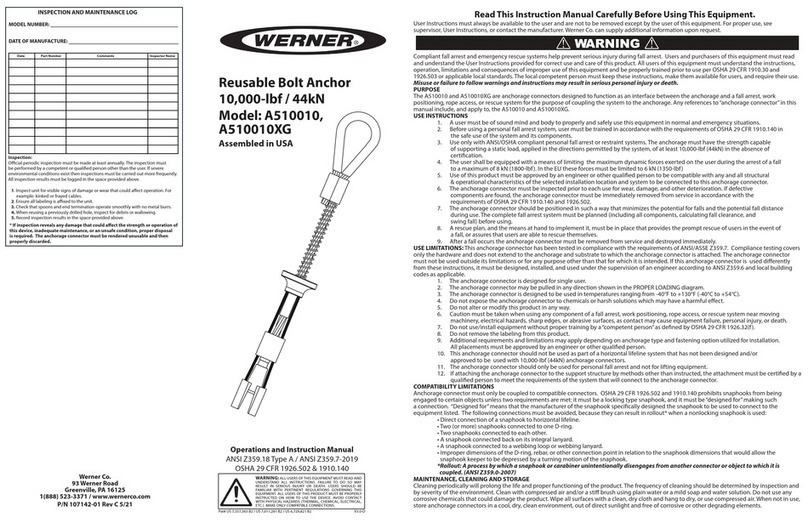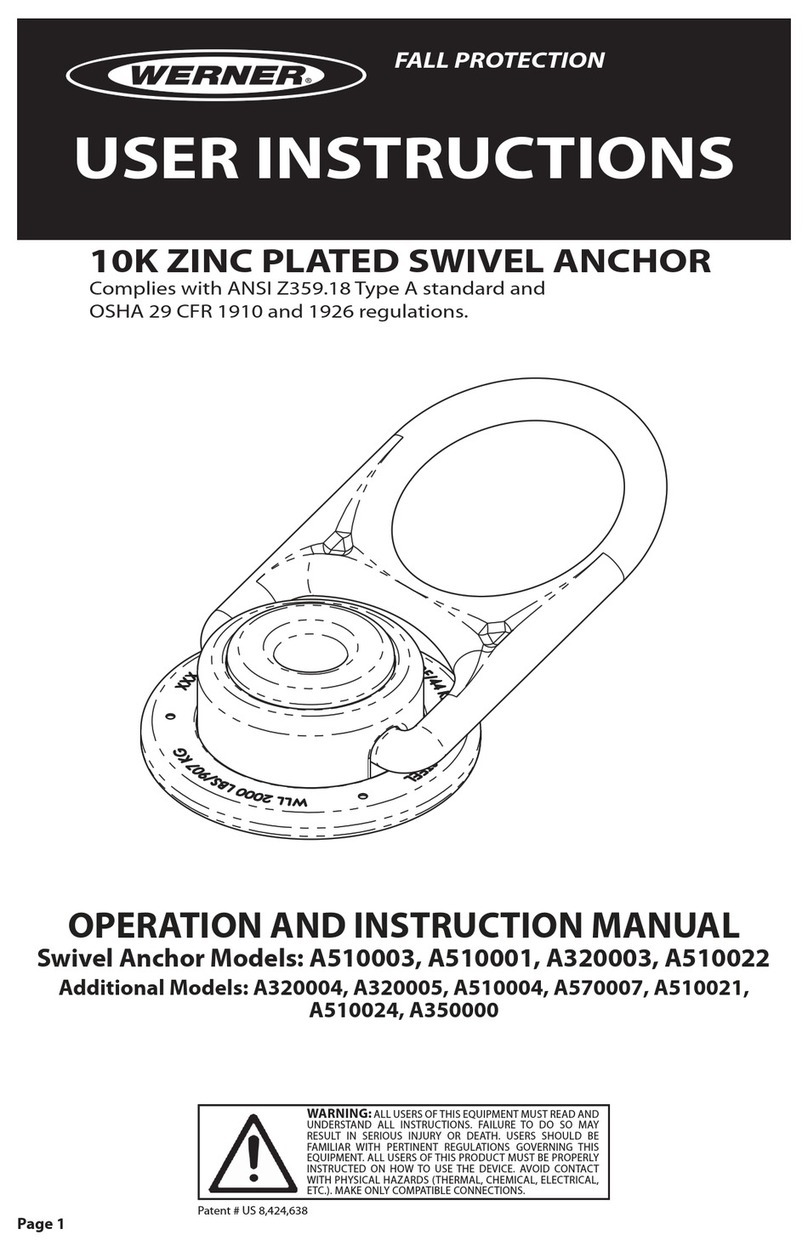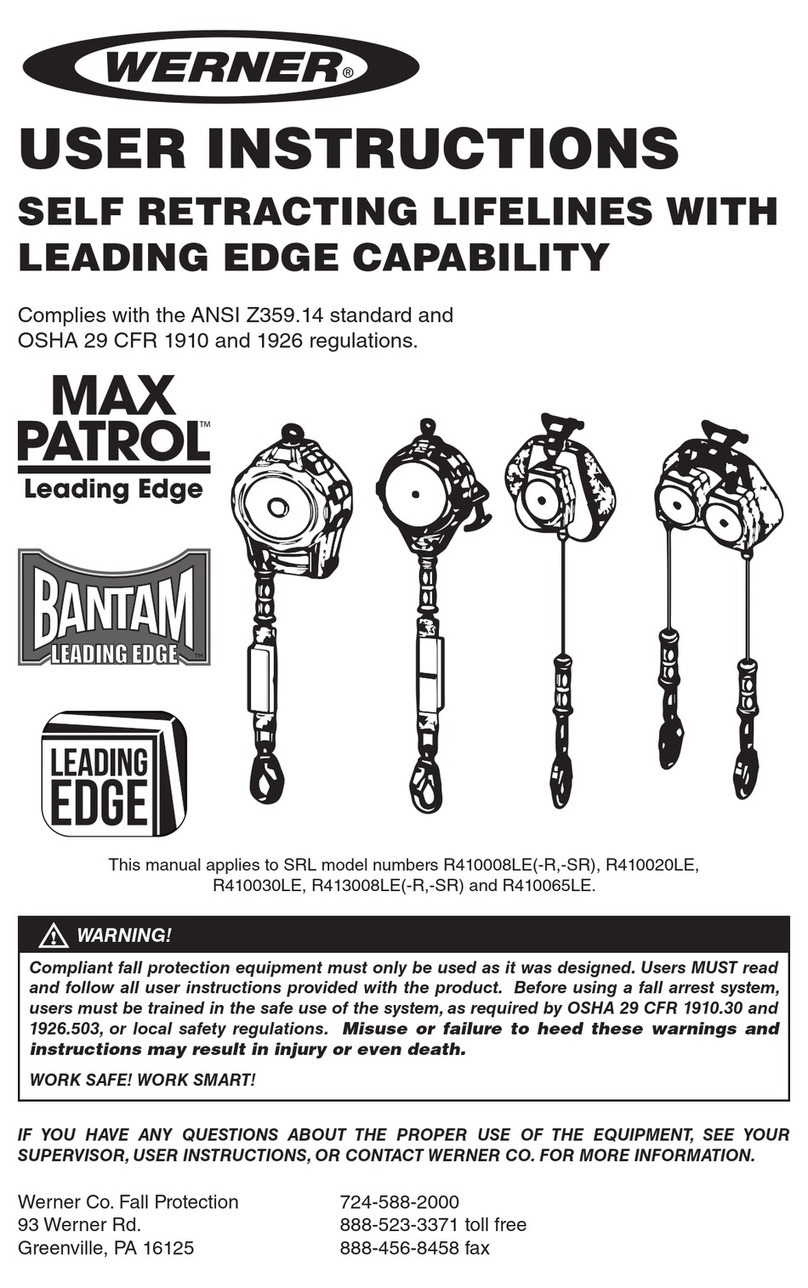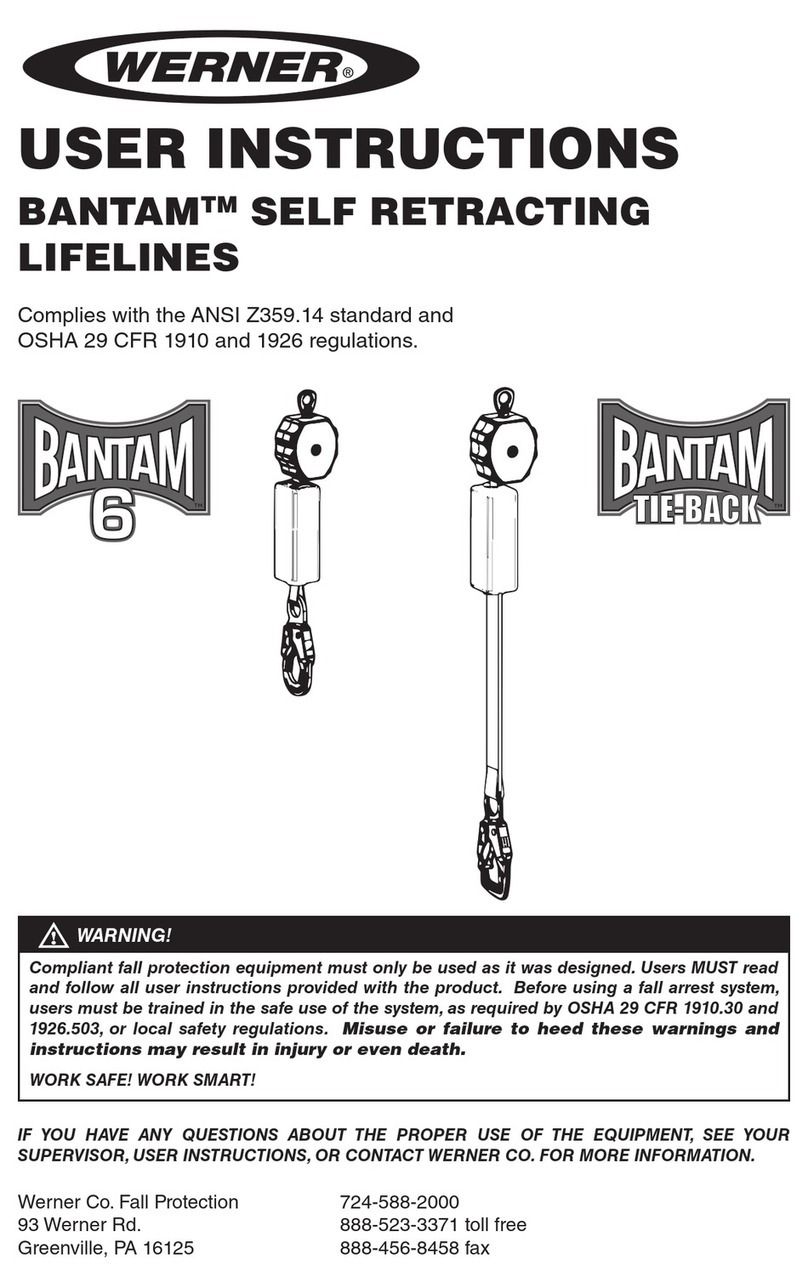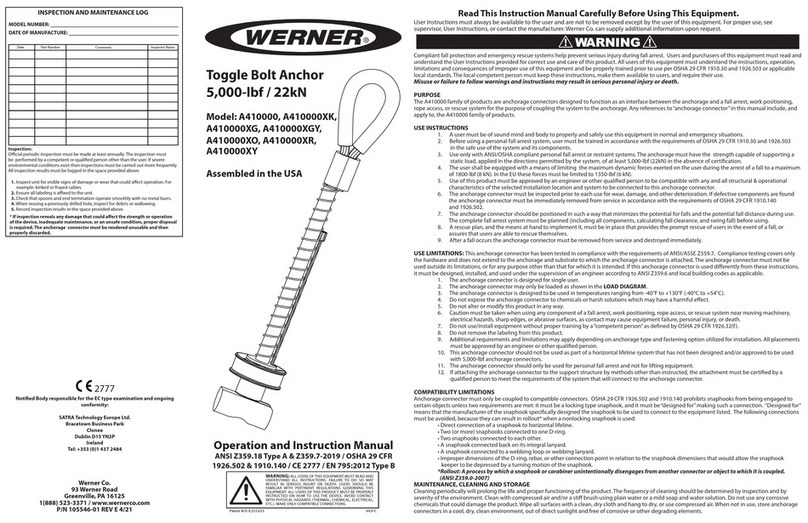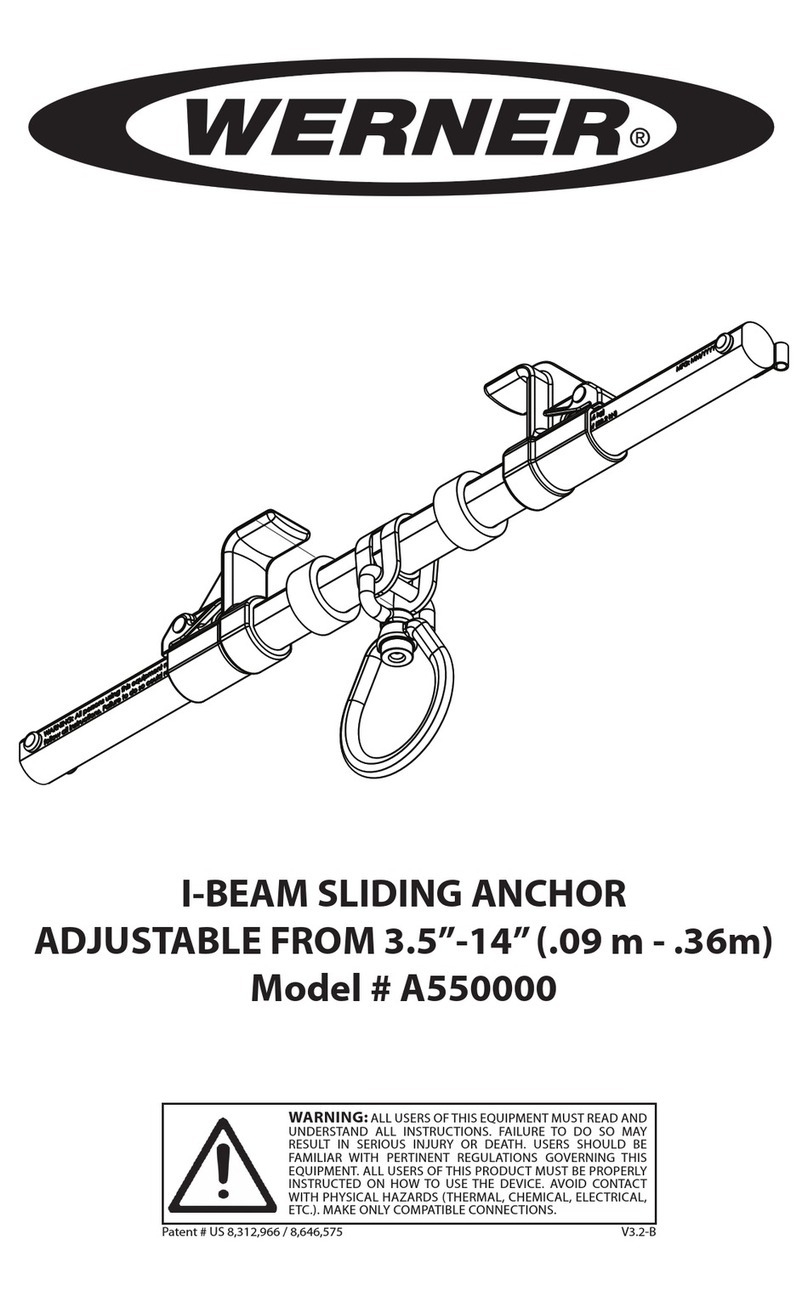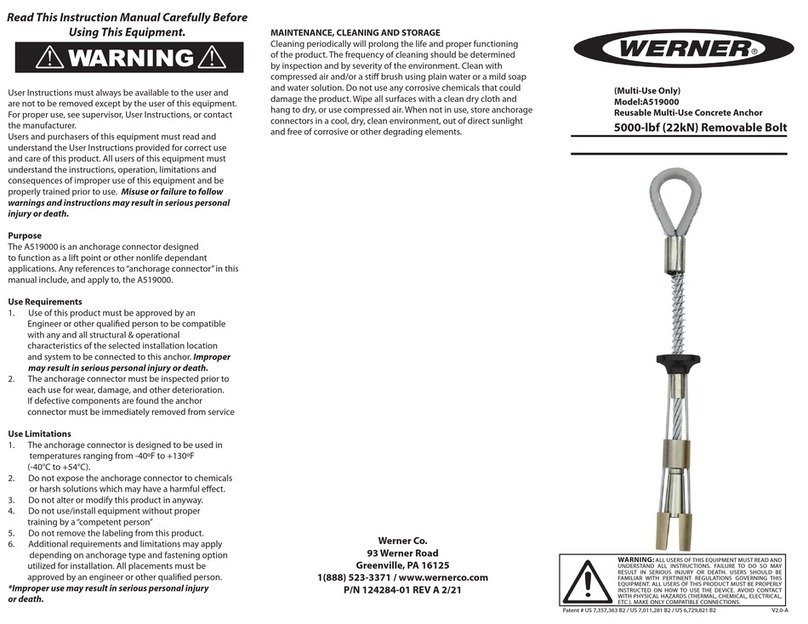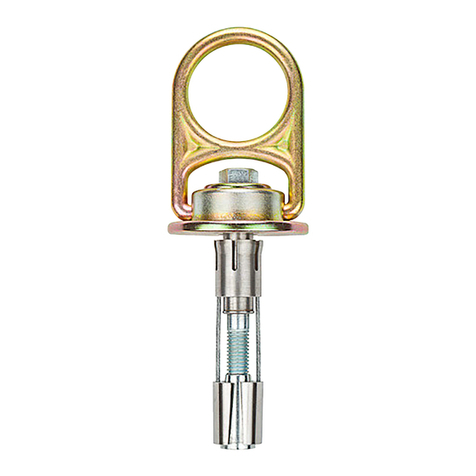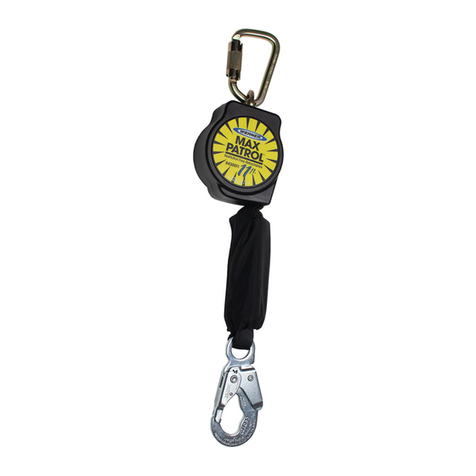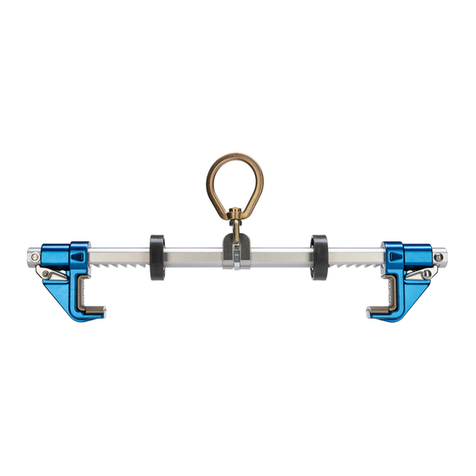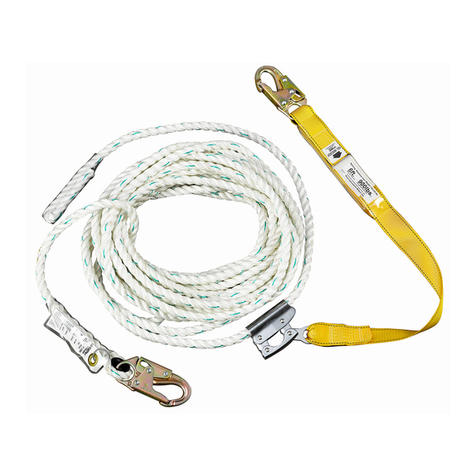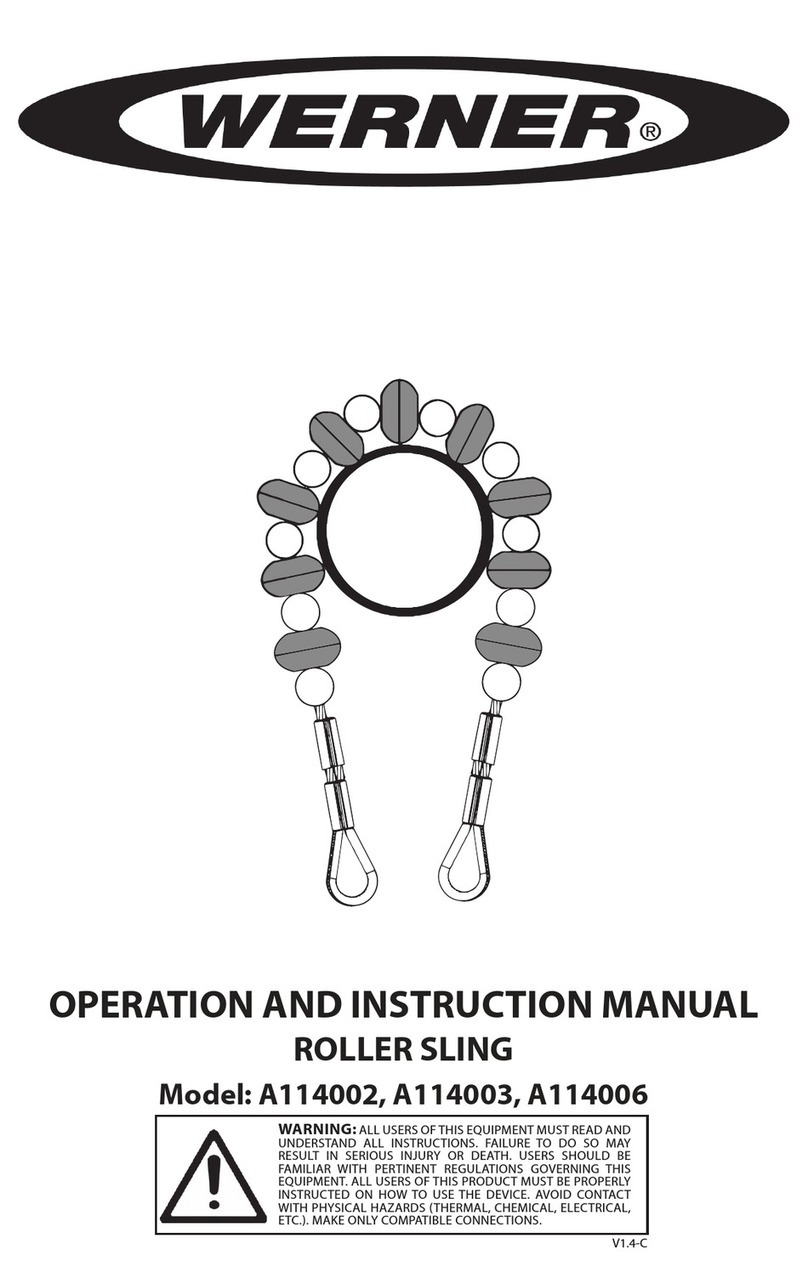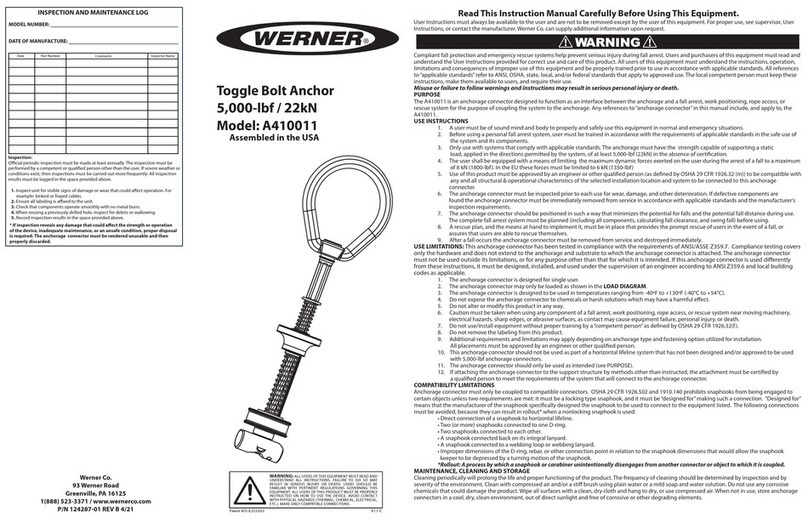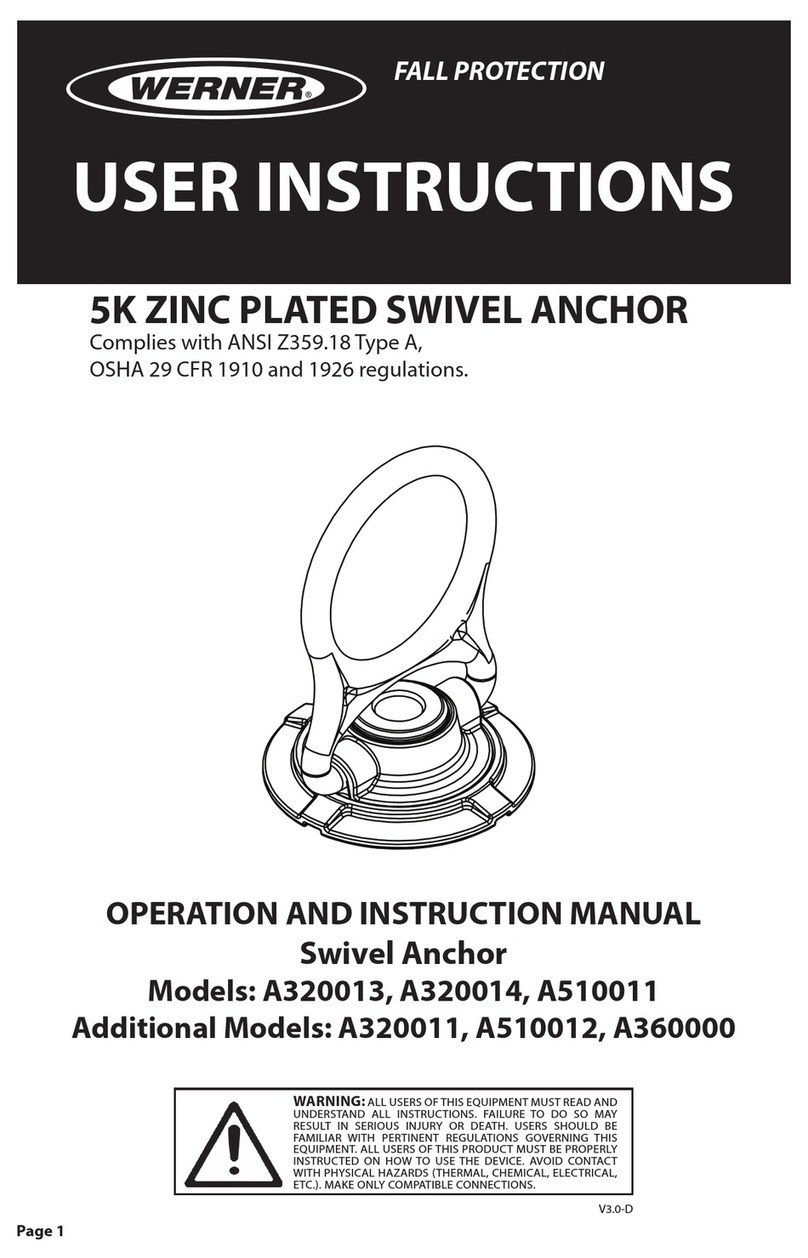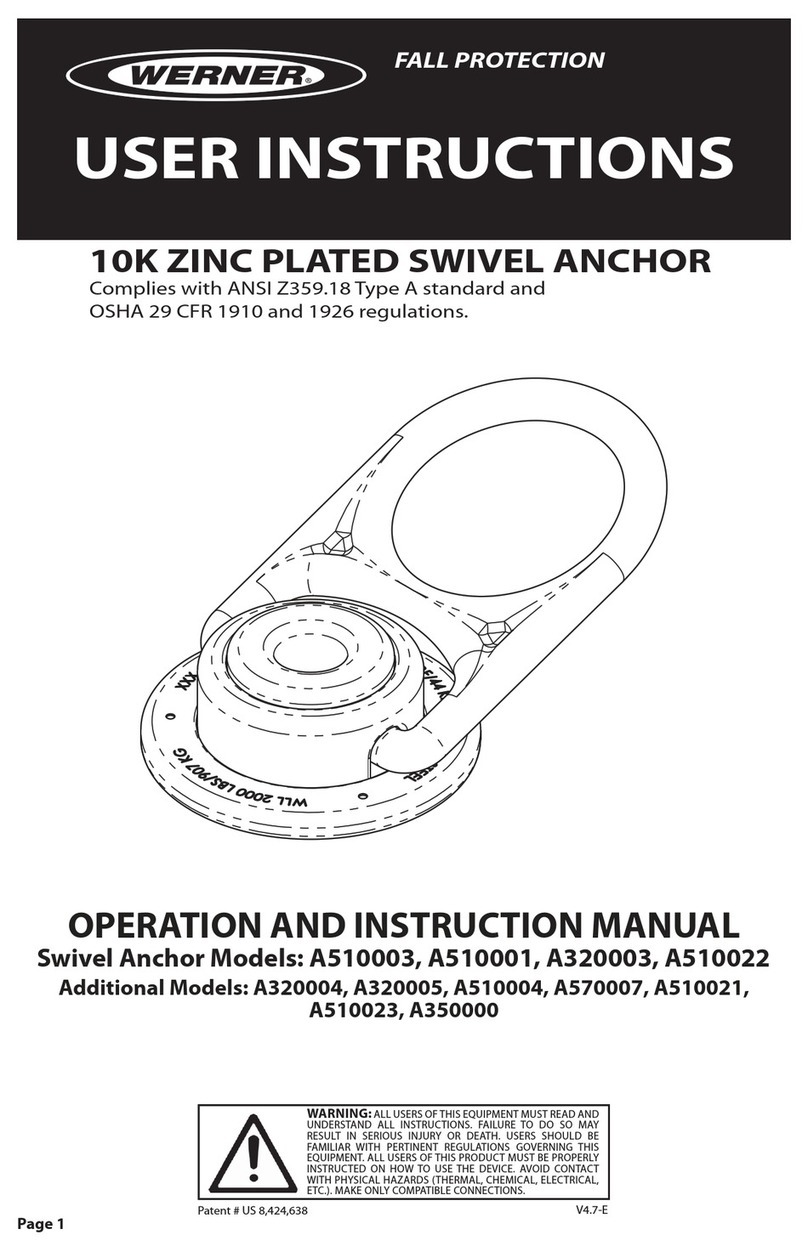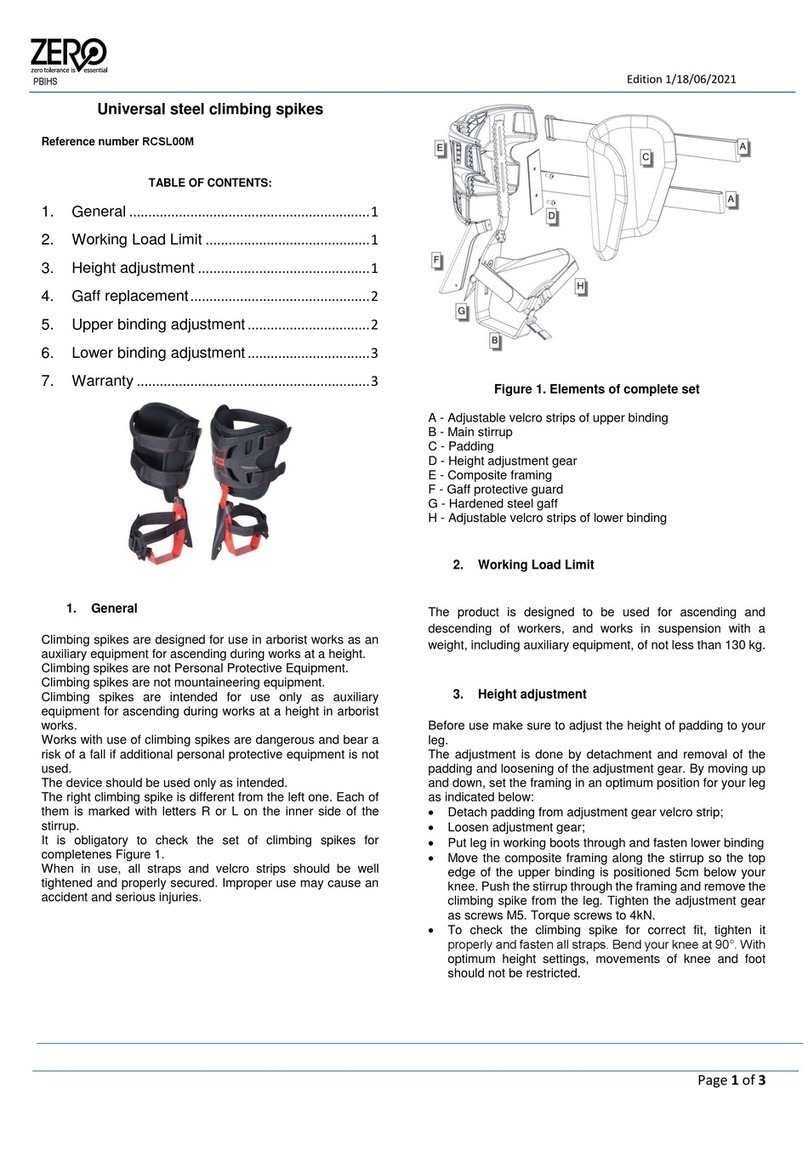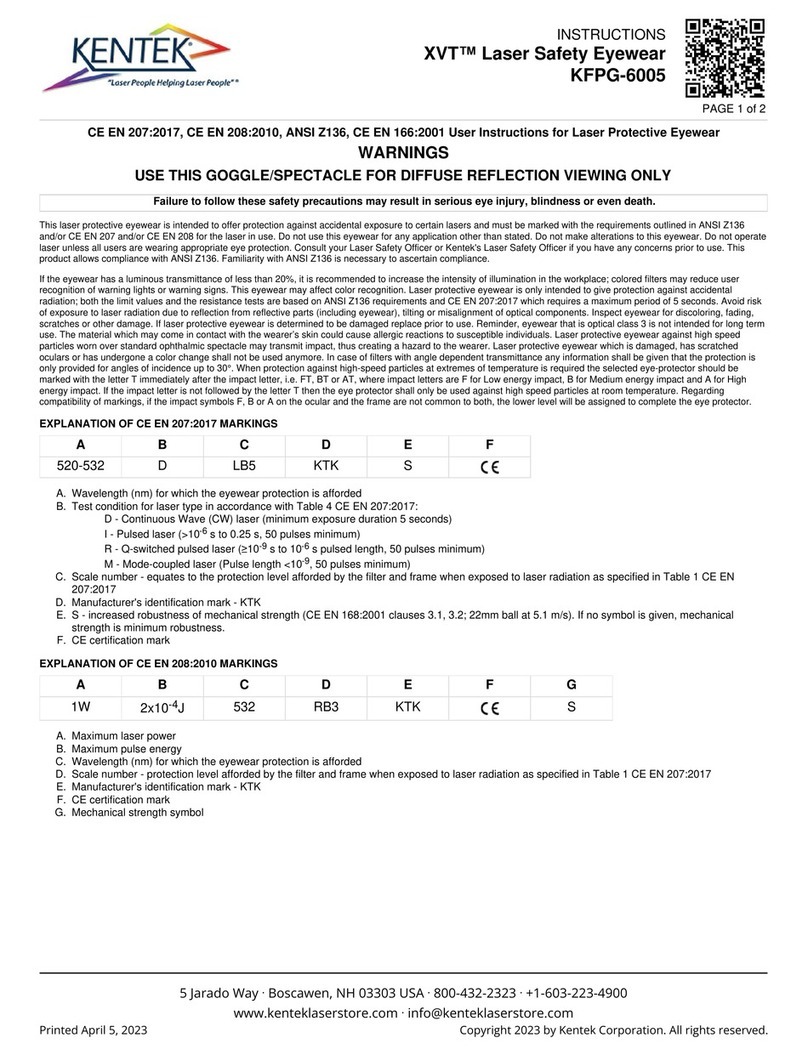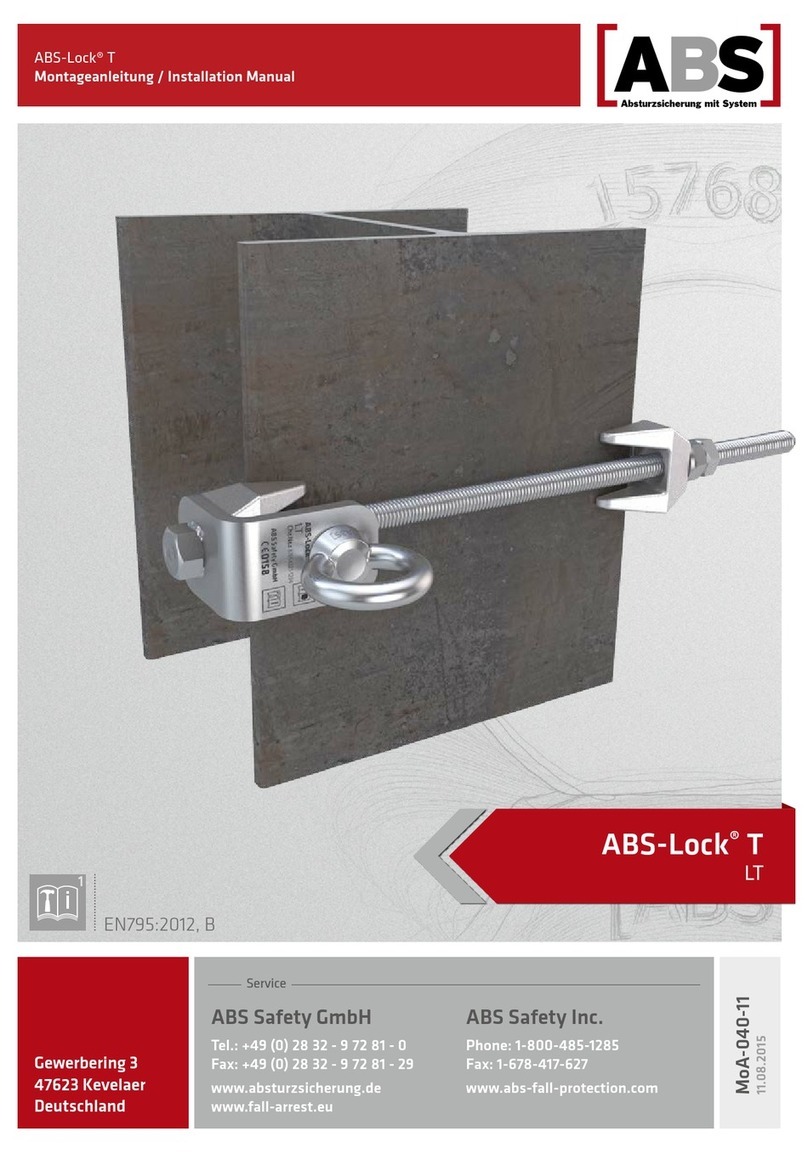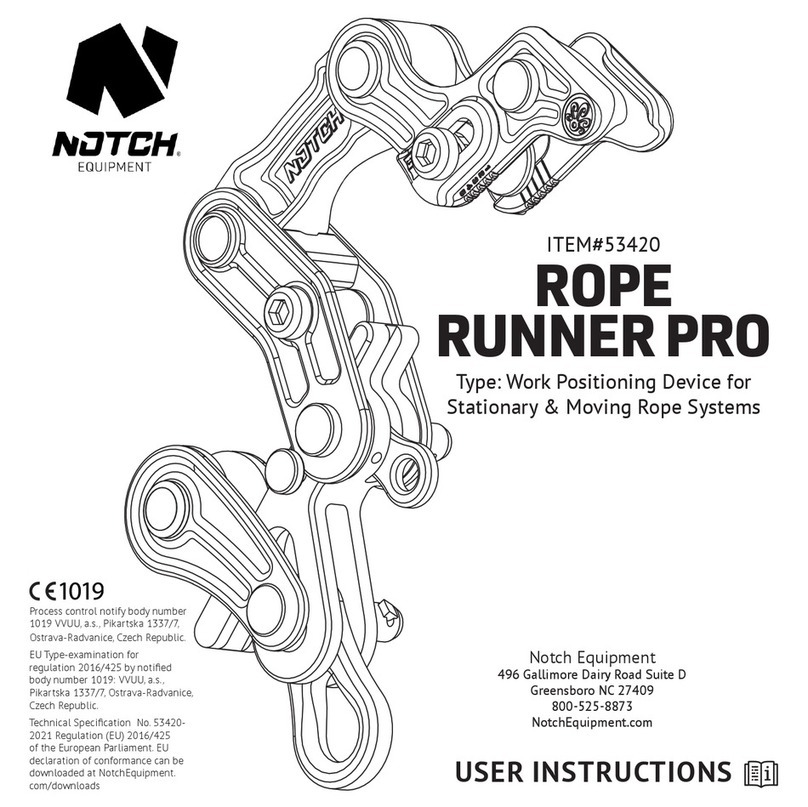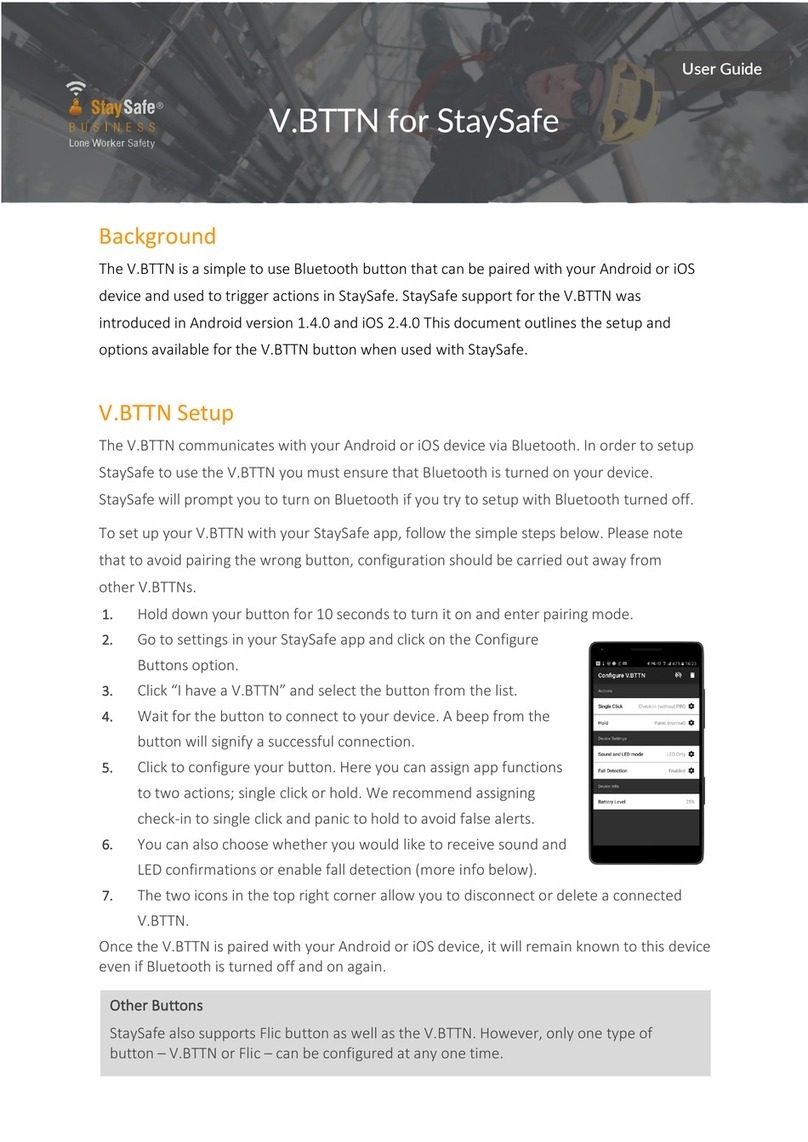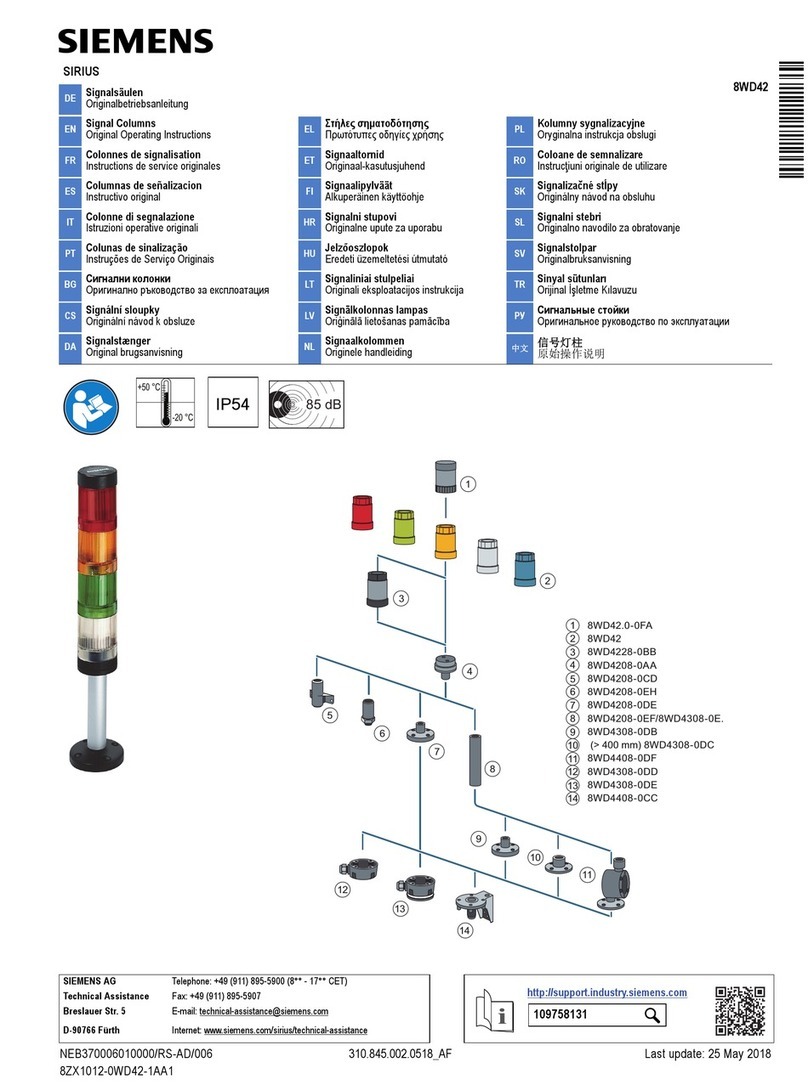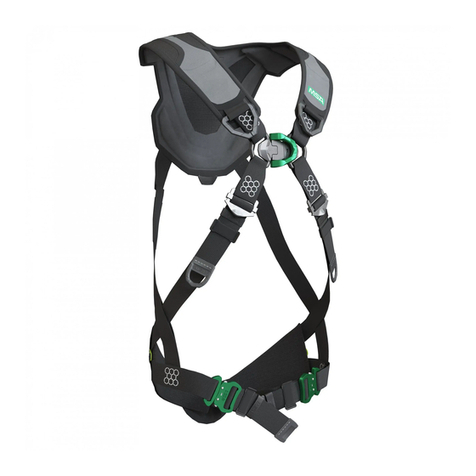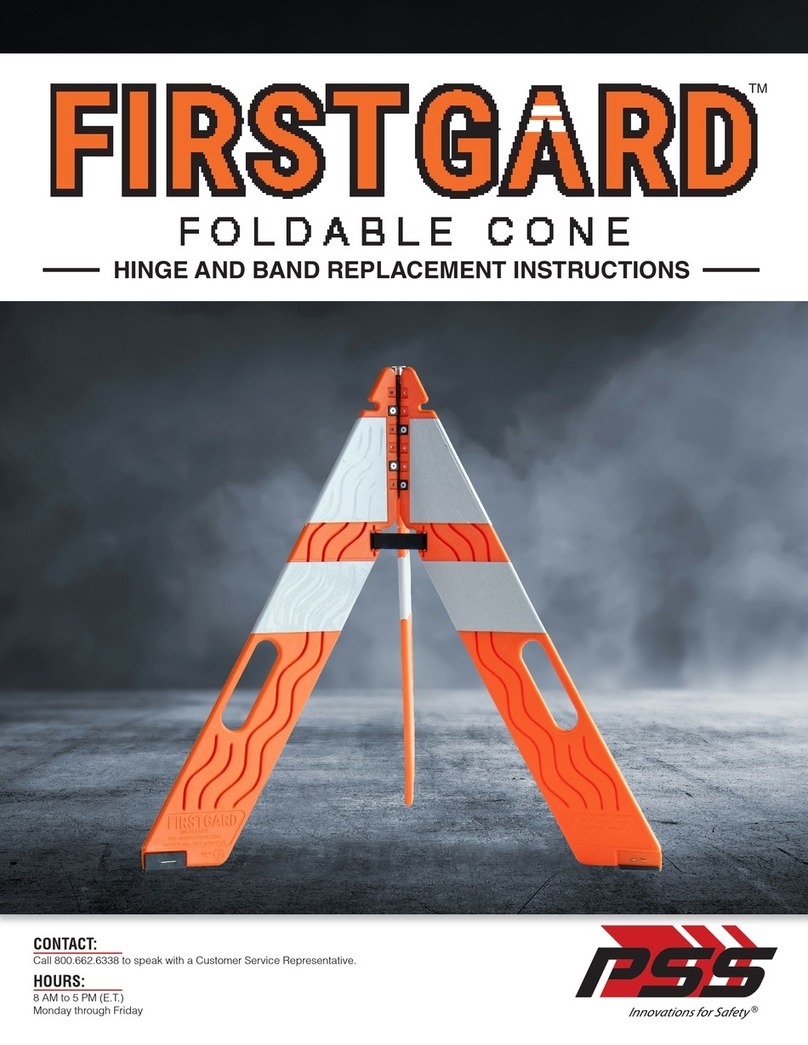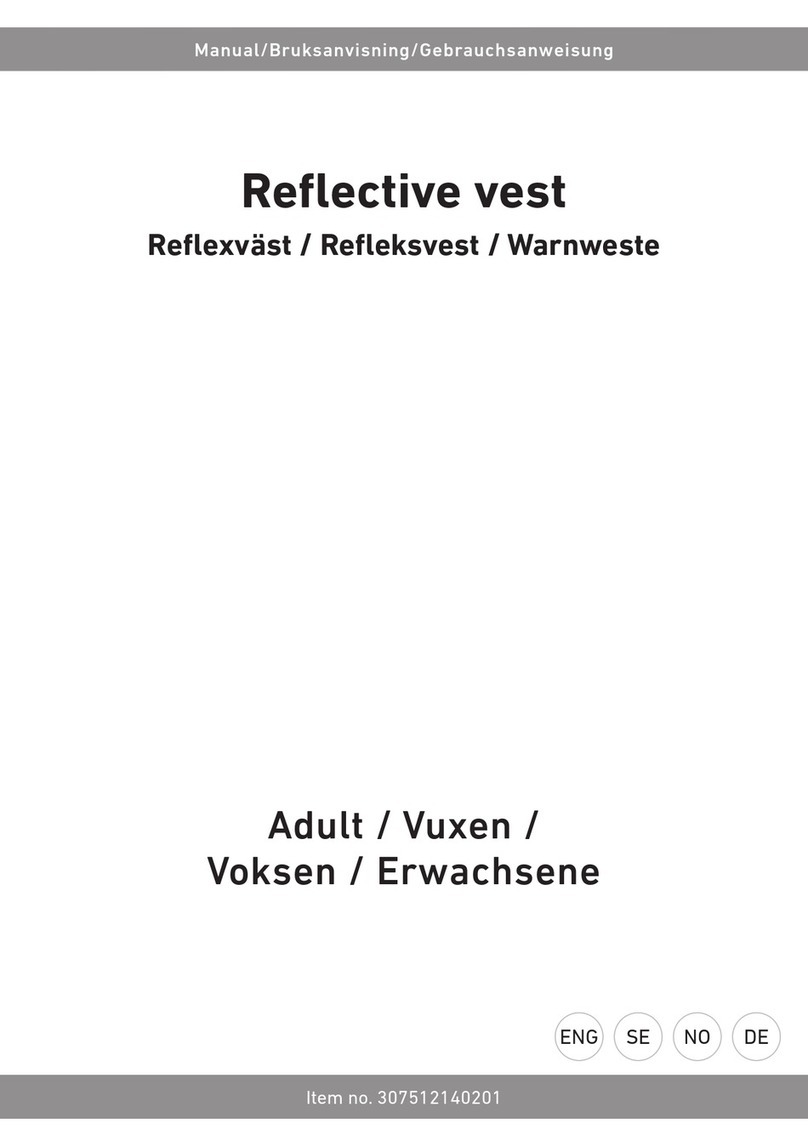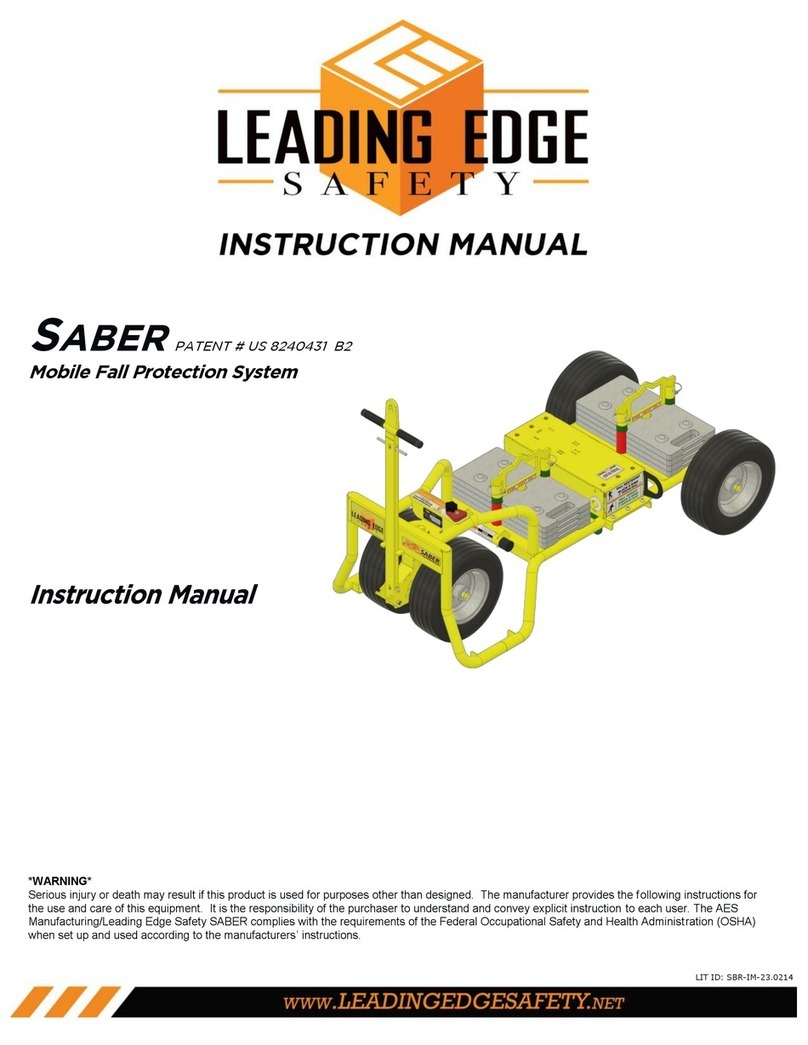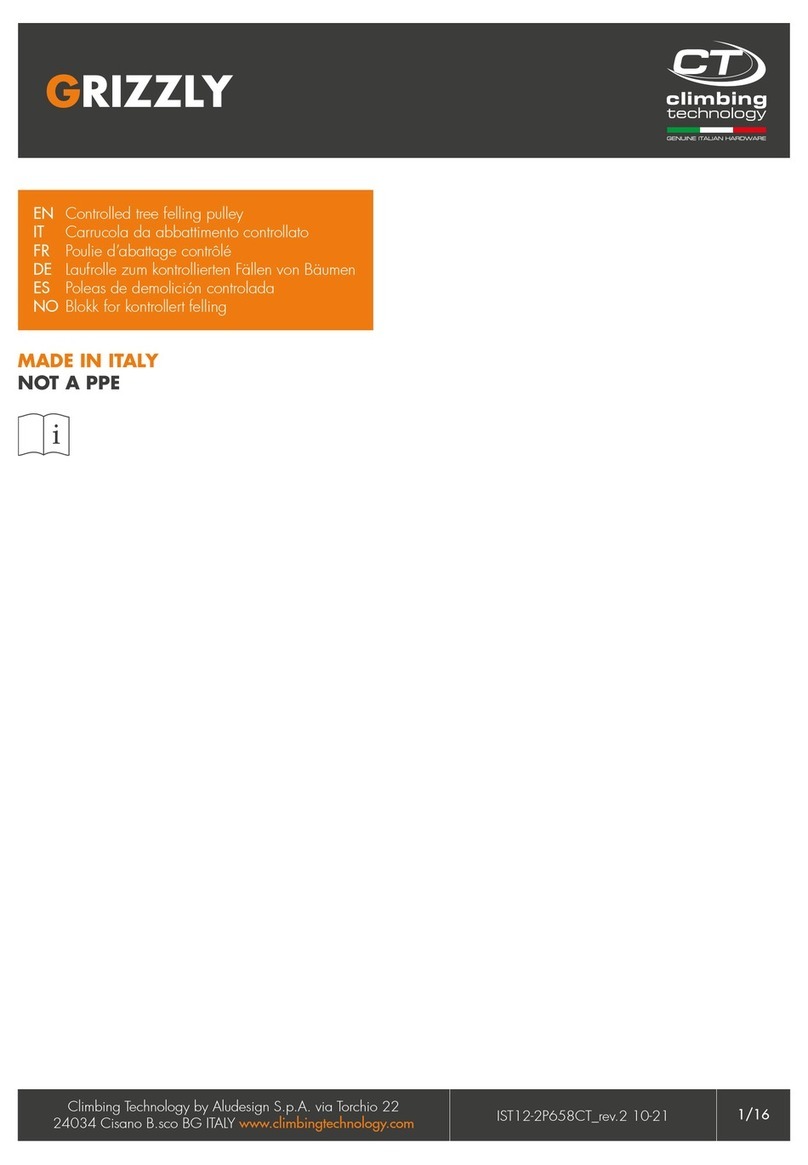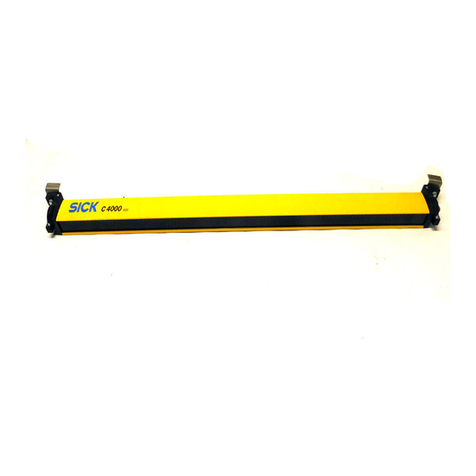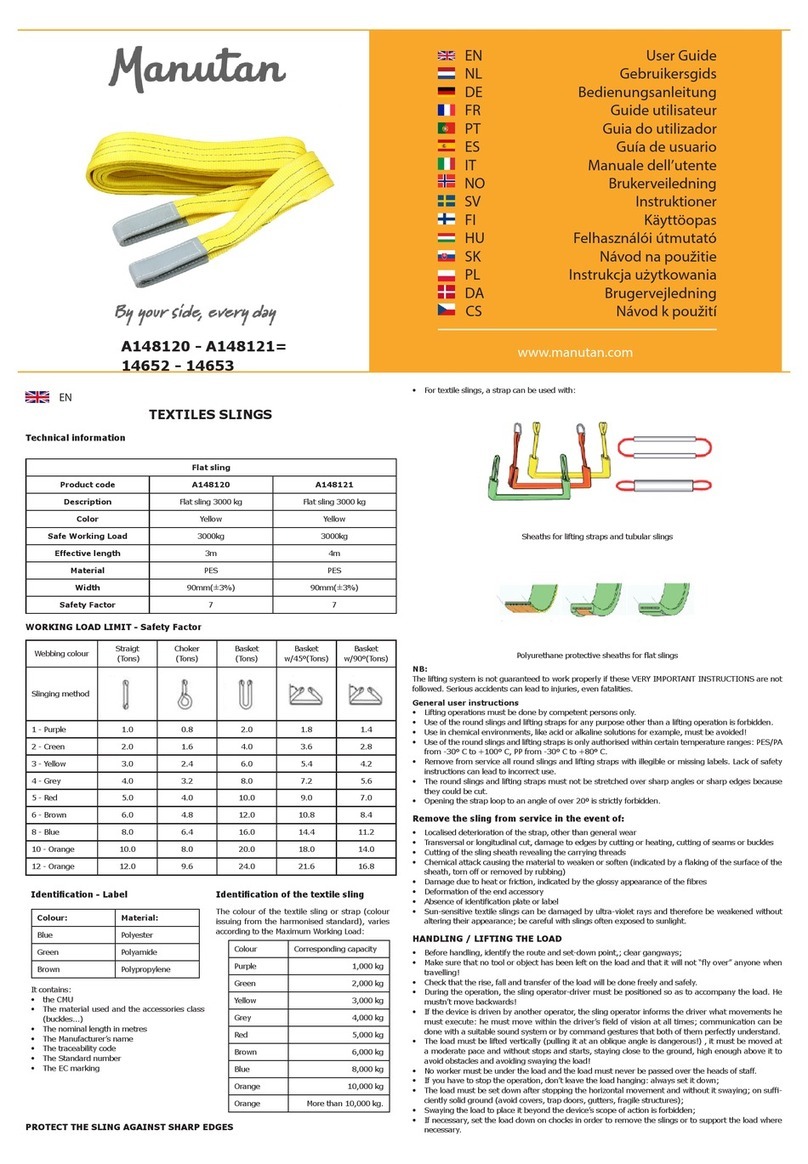
use LImItatIons
1. Carabiners must only be connected to compatible anchorages and
other connecting equipment.
2. Carabiners must NOT be connected:
• to a D-ring to which another connector is attached,
• in a manner that would result in a load on the gate,
WARNING: If the connecting element that a carabiner
attaches to is undersized or irregular in shape, a situation could
occur where the connecting element applies a force to the gate of
the carabiner. This force may cause the gate to open, allowing the
carabiner to disengage from the connecting point.
• in a false engagement, where surrounding inuences prevent the
carabiner from fully closing and engaging the connection to each
other,
• to any object which is shaped or dimensioned such that the
carabiner will not close and lock, be loaded incorrectly, or that roll-
out could occur.
WARNING: Large throat opening carabiners should not
be connected to standard size D-rings or similar objects which will
result in a load on the gate if the carabiner or D-ring twists or rotates.
Large throat carabiners are designed for use with anchorages or
other connectors that are shaped in a way that cannot pressure the
gate.
3. Carabiners are designed to be used in temperatures ranging from
-40°F to +130°F (-40°C to +54°C). Carabiners are designed to be
used for personal protection and not used to hoist materials or other
purposes.
ProPer connectIon
ImProPer connectIons
InsPectIon
Carabiners shall be inspected before each use and annually by a
competent person other than the user. Local governmental jurisdictions
may require more frequent inspections. If the carabiner has been subjected
to forces of arresting a fall, is damaged or non-functional, or does not pass
inspection, remove it from service immediately. To inspect a carabiner;
104775-02 ©2021 Werner Co. Rev D 9/21
User Instruction Manual
WernerCo Corporate Headquarters: 555 Pierce Road, Suite 300, Itasca, IL 60143
TEL: 888-523-3370 FAX: (724) 588-0315 www.wernerco.com
A10030X
1. Inspect the body and gate of the carabiner for signs of deformity. If a
carabiner body or gate is deformed, remove from service.
2. Inspect the body and gate for cracks, nicks, gouges, corrosion,
chemical damage, paint, or debris. Remove damaged carabiners
from service.
3. Inspect for smooth, proper operation of the gate. It must open,
close, and lock smoothly and automatically. Remove from service if
defective.
4. Inspect the locking barrel that it rotates and closes completely. Debris
inside the gate can prevent the gate from locking completely.
5. If present, inspect the captive bar for signs of damage and that it still
holds the connecting part. Deformed captive bars indicate improper
loading, damage or modication. Remove from service if damaged.
6. Inspect that the carabiner markings are legible. If markings are
illegible, remove from service.
maIntenance and storage
Carabiners can be cleaned with a soft cloth to remove any contaminants.
A dry lubricant can be used on the gate mechanism to lubricate the
carabiner, providing lubricant does not contact any equipment the
carabiner is connected to. The carabiner must be stored in a cool, dry
place out of direct sunlight when not in use. Do not store where damage
from environmental factors such as heat, light, excessive moisture, oil,
chemicals or vapors, or other degrading elements exist. Do not store
damaged or equipment in need of maintenance in the same area as
products intended for use.
Other than cleaning and lubrication, do not attempt or conduct any
maintenance on carabiners. Only Werner Co., or persons or entities
authorized by Werner Co., may make repairs or alterations to the
equipment.
A. B. C.
D. E. F.
NO! NO! NO! NO!
NO!NO!NO!NO!
A. B. C.
D. E. F.
NO! NO! NO! NO!
NO!NO!
NO!
Carabiners

